
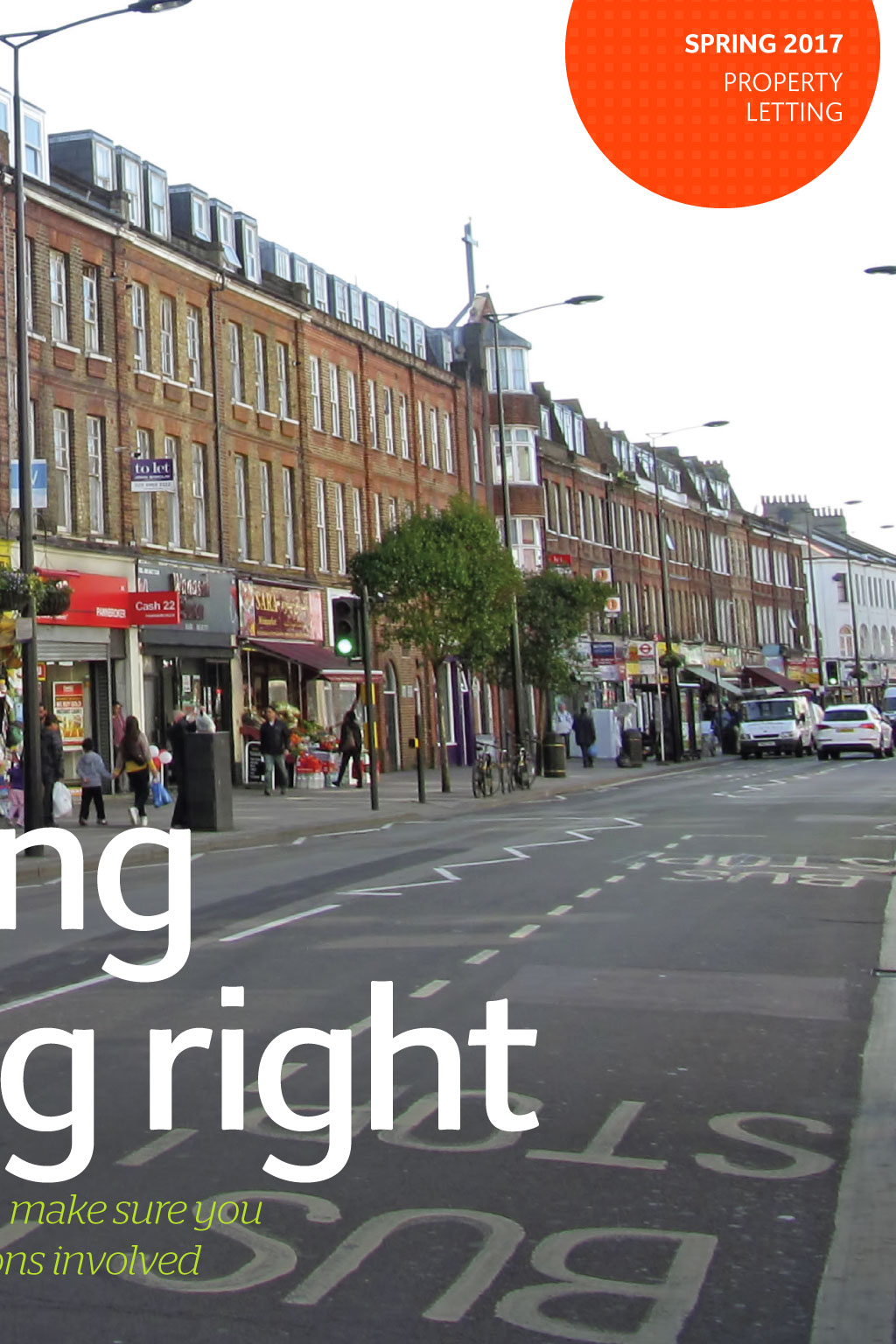
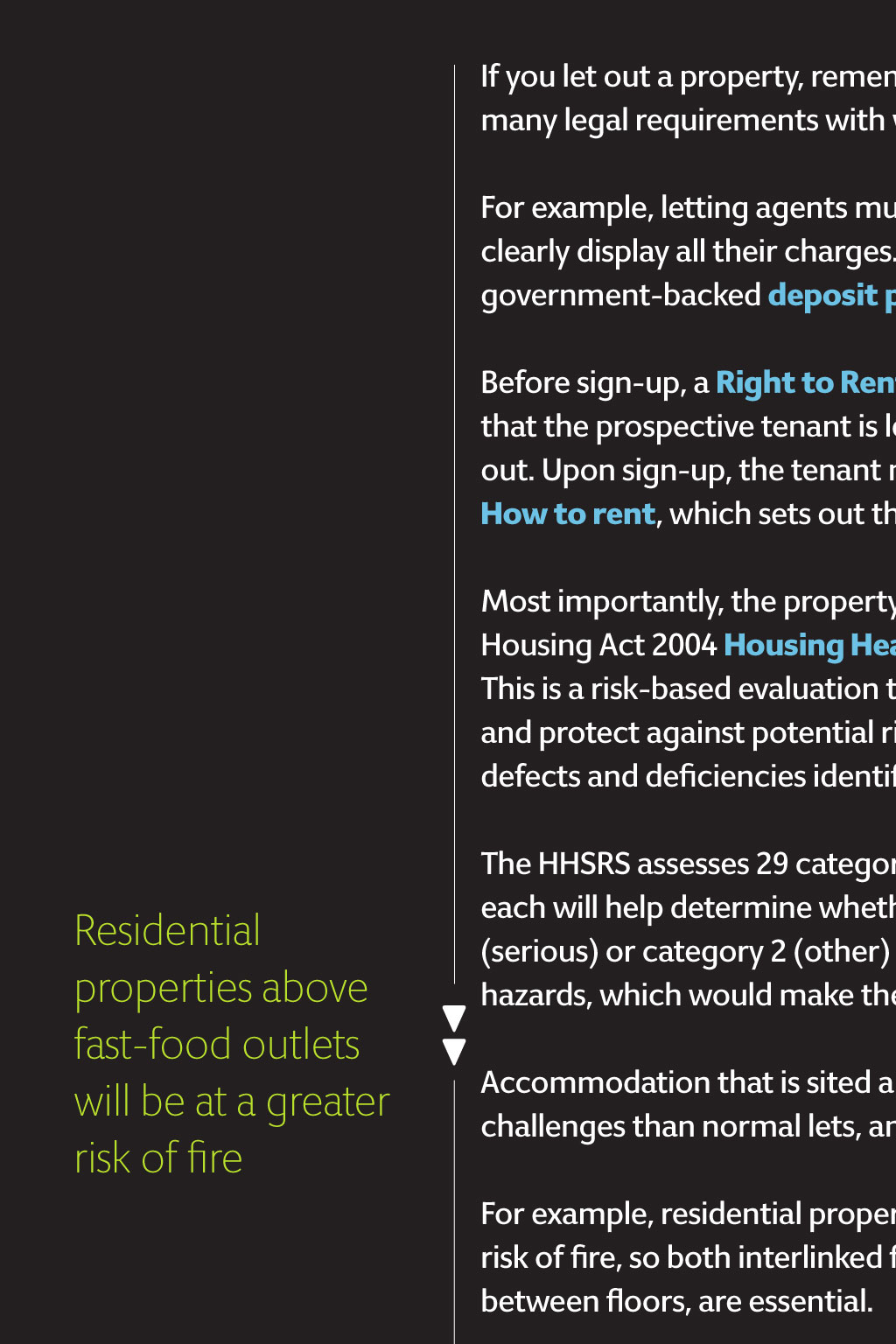
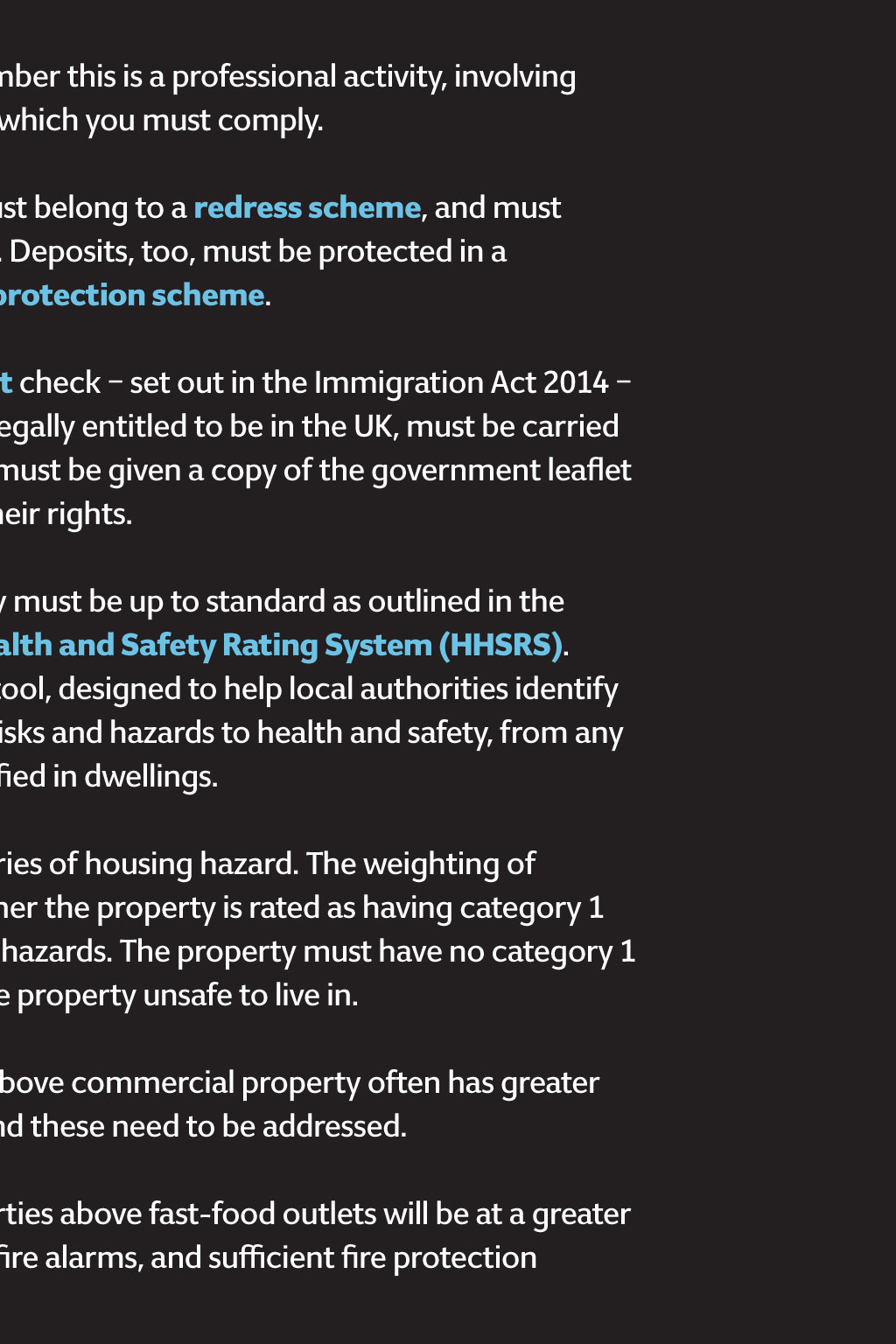

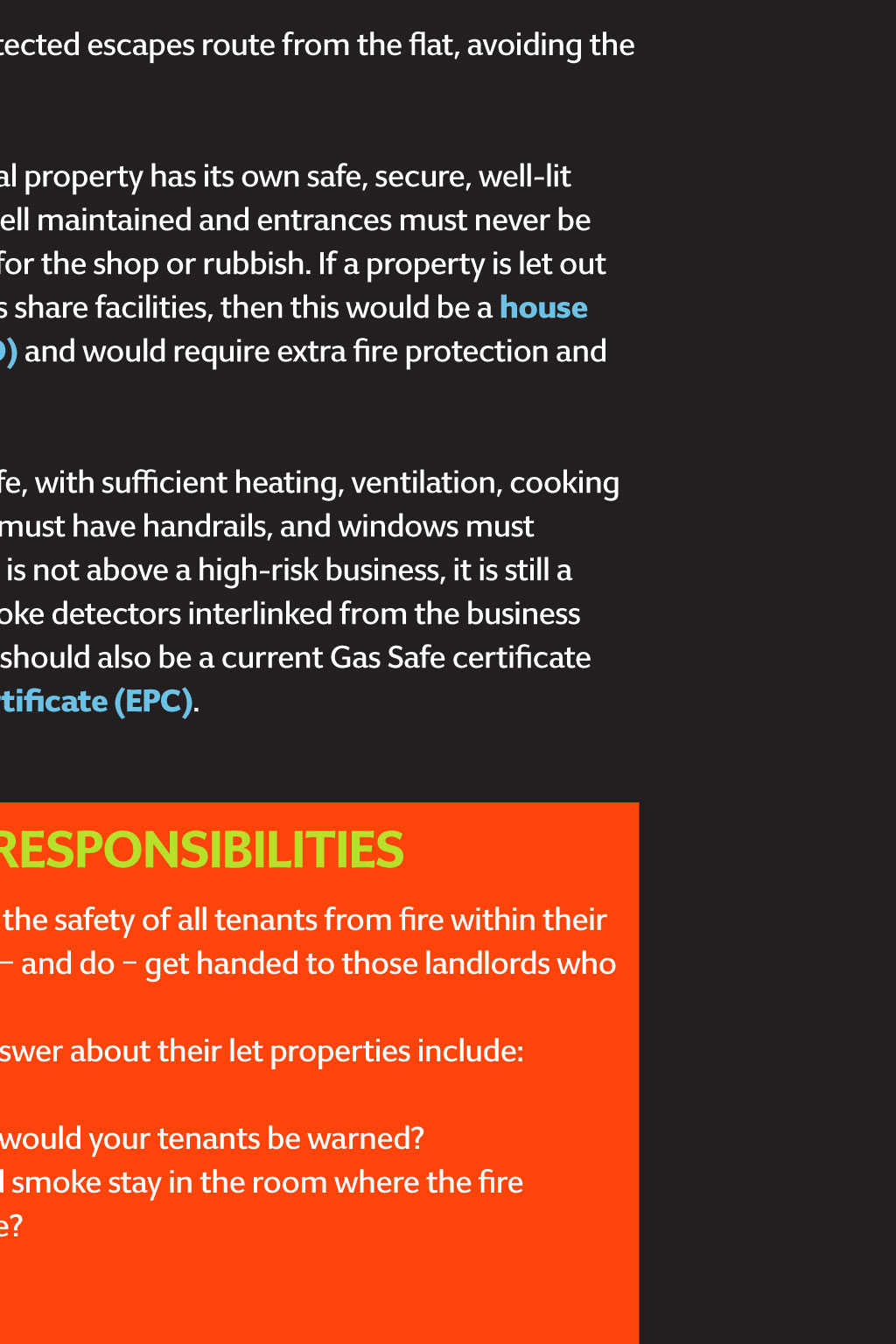
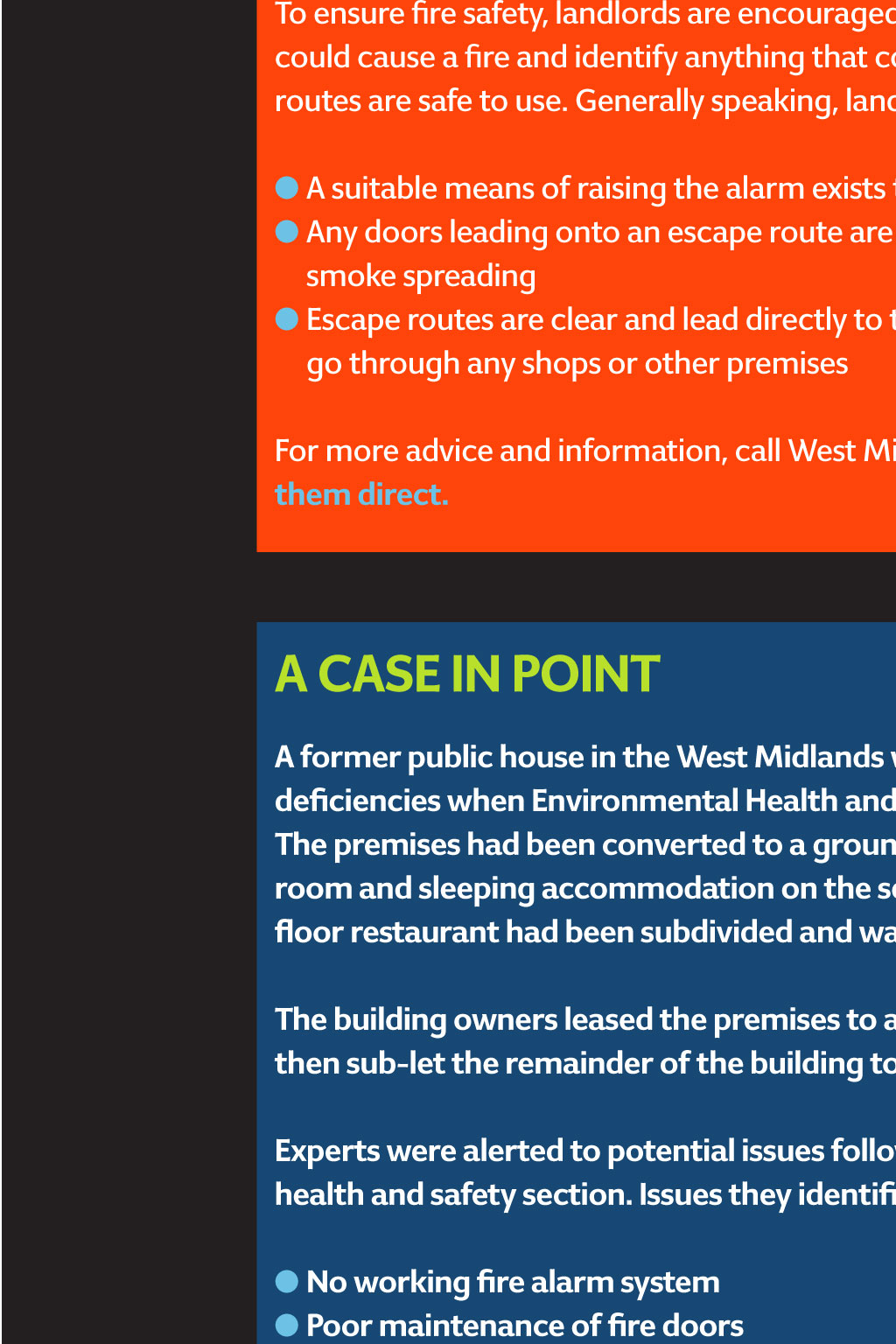
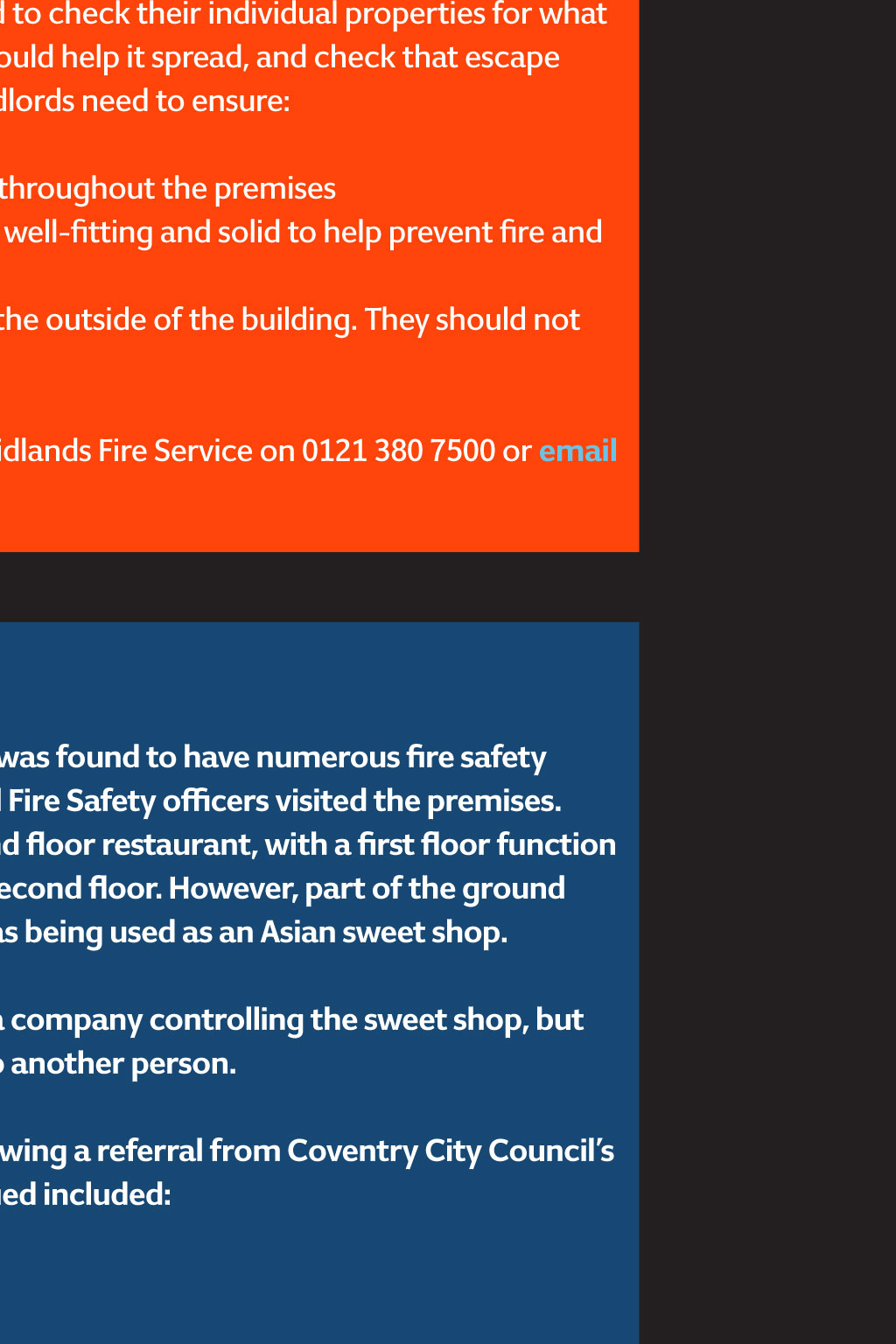
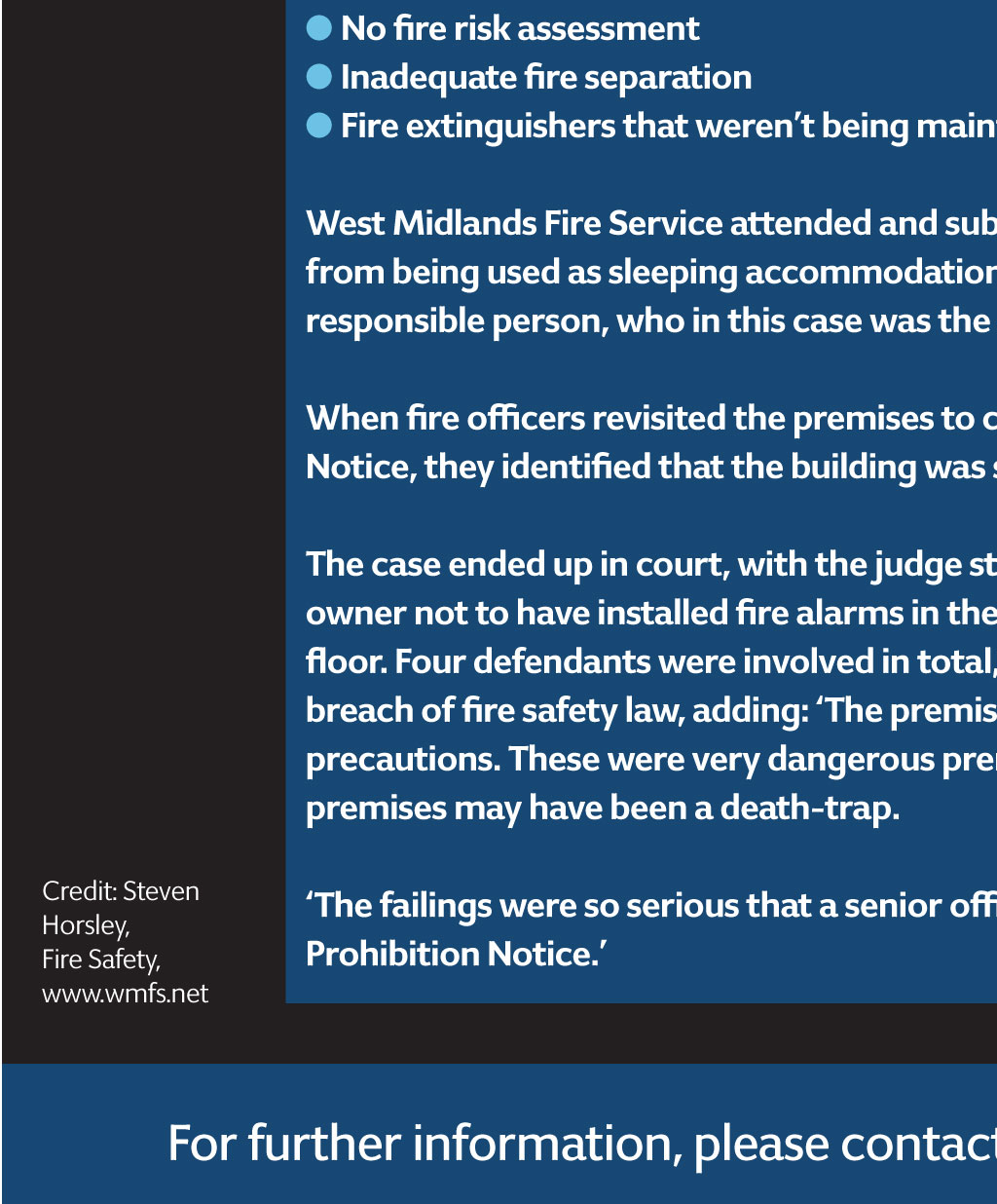
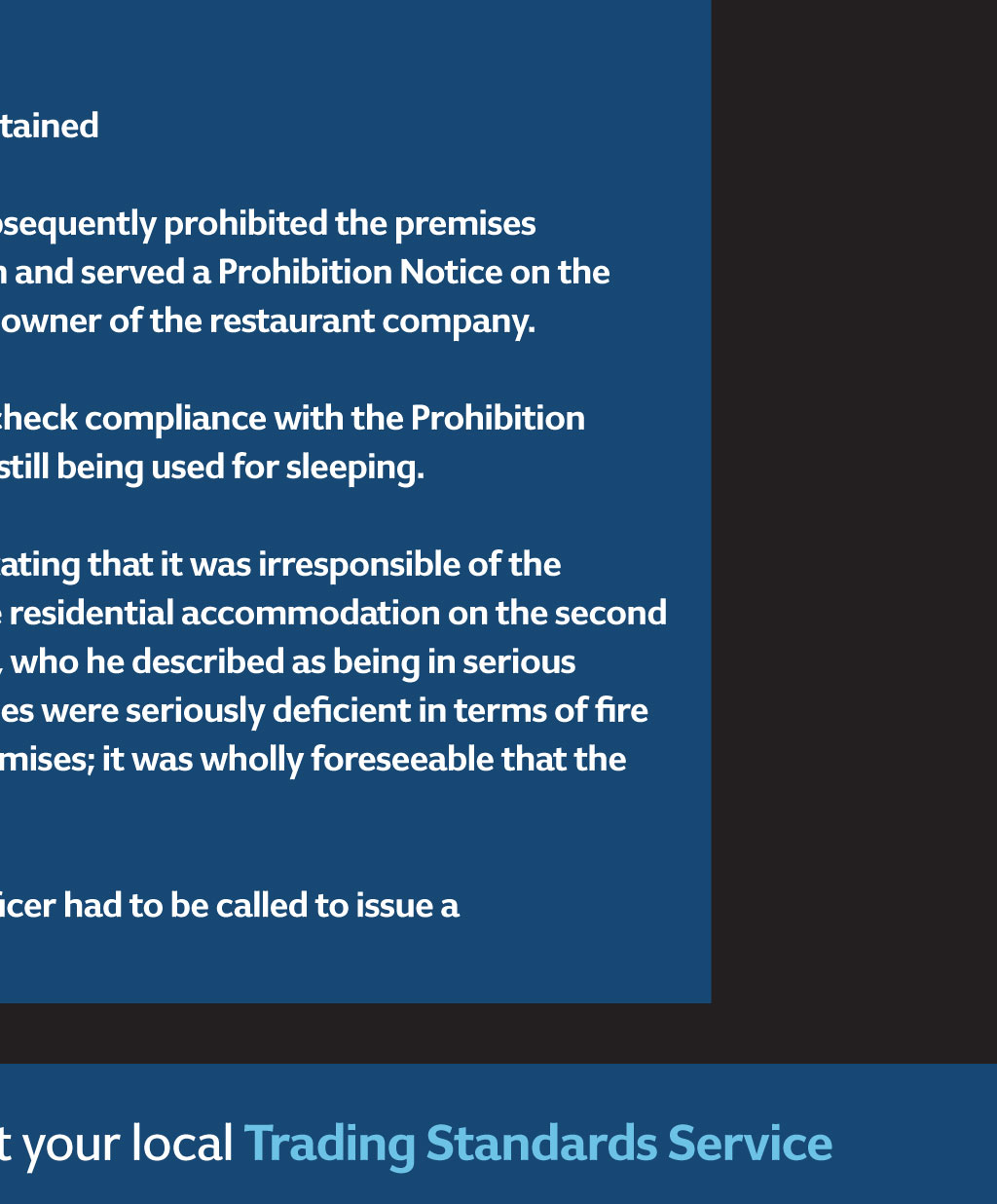
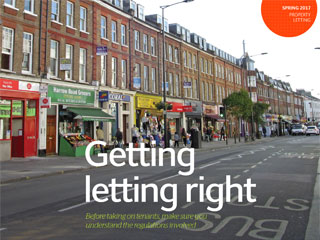
Spring 2017 ProPerty letting Getting letting right Before taking on tenants, make sure you understand the regulations involved If you let out a property, remember this is a professional activity, involving many legal requirements with which you must comply. For example, letting agents must belong to a redress scheme, and must clearly display all their charges. Deposits, too, must be protected in a government-backed deposit protection scheme. Before sign-up, a Right to Rent check – set out in the Immigration Act 2014 – that the prospective tenant is legally entitled to be in the UK, must be carried out. Upon sign-up, the tenant must be given a copy of the government lea et How to rent, which sets out their rights. Most importantly, the property must be up to standard as outlined in the Housing Act 2004 Housing Health and Safety Rating System (HHSRS). This is a risk-based evaluation tool, designed to help local authorities identify and protect against potential risks and hazards to health and safety, from any defects and de ciencies identi ed in dwellings. The HHSRS assesses 29 categories of housing hazard. The weighting of each will help determine whether the property is rated as having category 1 (serious) or category 2 (other) hazards. The property must have no category 1 hazards, which would make the property unsafe to live in. Accommodation that is sited above commercial property often has greater challenges than normal lets, and these need to be addressed. For example, residential properties above fast-food outlets will be at a greater risk of re, so both interlinked re alarms, and su cient re protection between oors, are essential. There should also be clear, protected escapes route from the at, avoiding the commercial premises. It is essential that the residential property has its own safe, secure, well-lit entrance; staircases must be well maintained and entrances must never be obstructed by shutters, goods for the shop or rubbish. If a property is let out room by room, and the tenants share facilities, then this would be a house in multiple occupation (HMO) and would require extra re protection and more management. The property should also be safe, with su cient heating, ventilation, cooking and bathing facilities. All stairs must have handrails, and windows must have restrictors. Even if the at is not above a high-risk business, it is still a requirement that there are smoke detectors interlinked from the business area into the living area. There should also be a current Gas Safe certi cate and Energy Performance Certi cate (EPC). KnoW your Fire SAFeTy reSponSibiliTieS Landlords have a legal responsibility to ensure the safety of all tenants from re within their property at all times. Custodial sentences can – and do – get handed to those landlords who break re safety rules. Questions that a landlord should be able to answer about their let properties include: l If a re occurred at night in your shop, how would your tenants be warned? l If a re occurred at night, would the re and smoke stay in the room where the restarted, and would it a ect the escape route? l Can your tenants get out safely? To ensure re safety, landlords are encouraged to check their individual properties for what could cause a re and identify anything that could help it spread, and check that escape routes are safe to use. Generally speaking, landlords need to ensure: l A suitable means of raising the alarm exists throughout the premises l Any doors leading onto an escape route are well- tting and solid to help prevent re and smoke spreading l Escape routes are clear and lead directly to the outside of the building. They should not go through any shops or other premises For more advice and information, call West Midlands Fire Service on 0121 380 7500 or email them direct. A cASe in poinT A former public house in the West Midlands was found to have numerous re safety de ciencies when environmental Health and Fire Safety o cers visited the premises. The premises had been converted to a ground oor restaurant, with a rst oor function room and sleeping accommodation on the second oor. However, part of the ground oor restaurant had been subdivided and was being used as an Asian sweet shop. The building owners leased the premises to a company controlling the sweet shop, but then sub-let the remainder of the building to another person. experts were alerted to potential issues following a referral from coventry city council’s health and safety section. issues they identi ed included: l no working re alarm system l poor maintenance of re doors l no re risk assessment l inadequate re separation l Fire extinguishers that weren’t being maintained West Midlands Fire Service attended and subsequently prohibited the premises from being used as sleeping accommodation and served a prohibition notice on the responsible person, who in this case was the owner of the restaurant company. When re o cers revisited the premises to check compliance with the prohibition notice, they identi ed that the building was still being used for sleeping. The case ended up in court, with the judge stating that it was irresponsible of the owner not to have installed re alarms in the residential accommodation on the second oor. Four defendants were involved in total, who he described as being in serious breach of re safety law, adding: ‘The premises were seriously de cient in terms of re precautions. These were very dangerous premises; it was wholly foreseeable that the premises may have been a death-trap. ‘The failings were so serious that a senior o cer had to be called to issue a prohibition notice.’ Residential properties above fast-food outlets will be at a greater risk of re Credit: elizabeth Mooney, Sandwell Council images: iStock.com / georgeclerk Credit: Steven Horsley, Fire Safety, www.wmfs.net For further information, please contact your local Trading Standards Service Getting letting right Before taking on tenants, make sure you understand the regulations involved